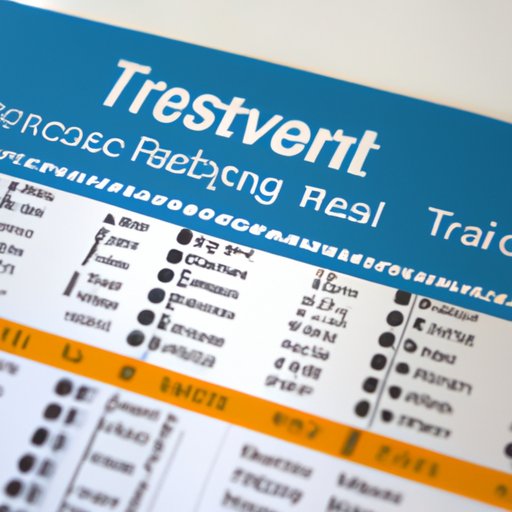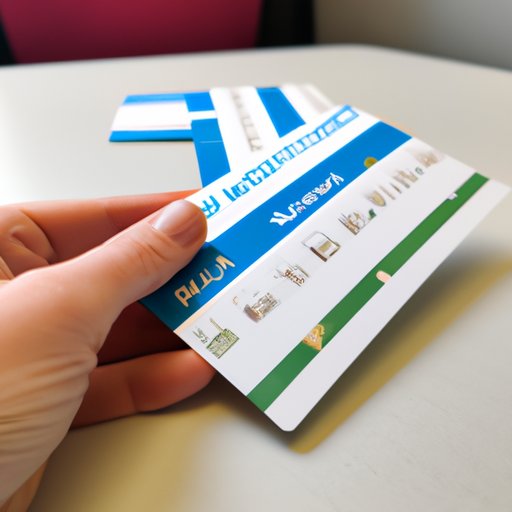Introduction
Travelling in France by train is a convenient and comfortable way to explore the country. From the high-speed TGV trains to scenic regional lines, France has something for everyone. In this article, we’ll provide a comprehensive guide to travelling by train in France, from researching train routes and ticket prices to familiarizing yourself with French customs and culture.

Research Train Routes and Ticket Prices
The first step in planning your train journey in France is to research the different routes and ticket prices. With over 30,000 km of railway network, there are numerous options available. The SNCF (Société Nationale des Chemins de fer Français) is the national railway system in France and offers both long-distance and regional services.
Understanding Different Train Routes
High-speed TGV (Train à Grande Vitesse) trains are the fastest option, connecting major cities such as Paris, Lyon, Marseille, and Bordeaux. These trains reach speeds of up to 320 km/h and can get you to your destination in a matter of hours. Regional trains are slower, but are often the best way to explore smaller towns and villages.
Schedules and Ticket Prices
Once you’ve chosen a route, you’ll need to book tickets. The SNCF website is a great resource for finding schedules and ticket prices. Here, you can easily compare different routes, times, and fares. You can also purchase tickets online or at the station. It’s important to note that tickets must be purchased before boarding the train, so plan ahead.

Learn About French Rail Passes
If you plan on travelling extensively in France, you may want to consider purchasing a rail pass. Rail passes offer discounted fares and exclusive services, and can save you money in the long run. There are several types of rail passes available, so it’s important to do your research and find the one that best suits your needs.
Different Types of Passes
The most popular type of rail pass is the Eurail Pass, which allows you to travel throughout Europe on a single ticket. If you plan on travelling only within France, you can purchase a France Rail Pass. This pass offers discounts on TGV and regional trains, and can be used for multiple trips. For those who plan on travelling extensively within France, there is the France Rail ‘n Drive pass, which includes discounts on car rentals in addition to train fares.
Discounted Fares and Exclusive Services
Rail passes offer discounted fares and exclusive services, such as priority access to TGV trains. They also make it easier to plan your trip in advance, as you don’t have to worry about booking tickets each time you travel. Keep in mind that some rail passes require a reservation fee, so be sure to read the fine print before purchasing.
Prepare for Your Journey
Once you’ve purchased your ticket or rail pass, it’s time to prepare for your journey. Knowing what to expect on board the train will help ensure a smooth and enjoyable trip.
Layout of the Trains
TGV and regional trains typically have two classes: First and Second. First class offers larger seats and more legroom, while second class is more affordable. Depending on the type of train, there may also be a dining car, where you can purchase food and drinks. Some trains also have WiFi, power outlets, and other amenities.
Amenities Available
Before boarding the train, check to see what amenities are available. Most trains offer basic amenities such as toilets, air conditioning, and storage compartments. On long-distance trains, there may also be restaurants, bars, and even showers. Be sure to ask the conductor if you have any questions or concerns.
Pack Lightly
When travelling by train, it’s important to pack lightly. Overpacking can be a hassle, as you’ll have to lug your bags around the station and on board the train. Instead, try to pack only the essentials and leave the rest behind.
Benefits of Packing Light
Packing light has several benefits. Not only will you have more room to move around, but you’ll also save money on baggage fees. Additionally, it’s easier to keep track of your belongings when they’re all in one bag. When packing, be sure to bring a few snacks and a bottle of water in case you get hungry during the journey.
Familiarize Yourself with French Customs and Culture
Finally, it’s important to familiarize yourself with French customs and culture before embarking on your journey. Reading up on French etiquette and language can go a long way towards making your trip more enjoyable and seamless.
Reading up on Customs and Culture
Start by reading up on French customs and culture. Learning a few basic phrases in French can be helpful, as many people in France speak only their native language. Additionally, familiarizing yourself with French etiquette can help you avoid any potential misunderstandings. For example, it’s customary to greet someone with a handshake and maintain eye contact when speaking. Finally, remember to be respectful of local customs and traditions.
Conclusion
Travelling by train in France is an easy and cost-effective way to explore the country. By researching train routes and ticket prices, learning about rail passes, preparing for your journey, packing lightly, and familiarizing yourself with French customs and culture, you can ensure a safe and enjoyable journey.
(Note: Is this article not meeting your expectations? Do you have knowledge or insights to share? Unlock new opportunities and expand your reach by joining our authors team. Click Registration to join us and share your expertise with our readers.)
